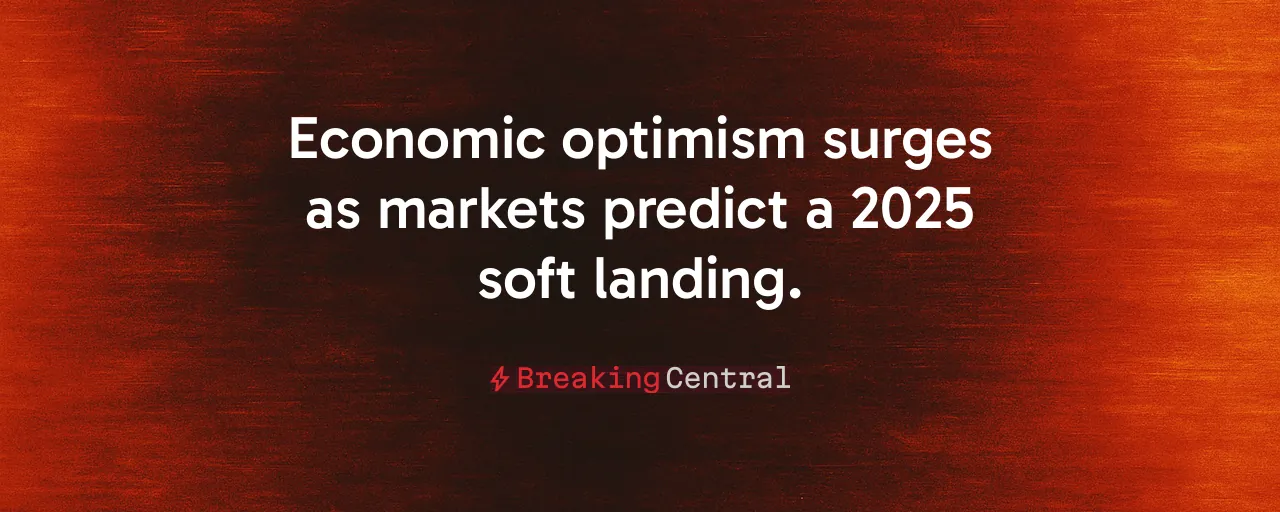A Recession Scare Fades Fast
The economic sky isn't falling. Kalshi's prediction markets now peg the odds of a 2025 U.S. recession at just 19 percent, a steep drop from nearly 50 percent earlier this year. This shift, mirrored by Wall Street giants like Goldman Sachs and Morgan Stanley, signals growing confidence in a soft landing, where growth slows without contracting. The news marks a sharp pivot from April's panic, when a preliminary GDP dip sparked fears of a downturn.
What changed? Stronger-than-expected data, from steady job growth to resilient consumer spending, has calmed nerves. The Trump administration's signals of moderating aggressive tariff plans have also eased concerns. This reflects a market reacting to tangible signs of strength. The question remains: what's driving this resilience, and can it last?
Policies That Power Prosperity
The backbone of this economic steadiness lies in policies prioritizing growth. Tax relief and deregulation have unleashed business optimism, with small-business confidence surveys rebounding since spring. Corporate cash balances are at record highs, fueling investment. Payrolls continue to expand, averaging over 150,000 new jobs monthly, while real wages inch upward, giving households more purchasing power.
These figures reflect a philosophy that trusts markets and rewards initiative. By easing regulatory burdens, businesses can hire and innovate without fear of red tape. Tax cuts, especially those set to expire, provide certainty for employers planning long-term growth. The result is an economy that's proving doubters wrong, quarter after quarter.
Tariffs: Tools for Policy
Tariffs remain a hot topic, but their role is often misunderstood. They serve as leverage for fairer trade deals. The administration's softened stance on broad tariff hikes shows pragmatism, aiming to protect American workers without spiking consumer prices. Studies estimate a 1 percent tariff increase adds just 0.1 percent to inflation temporarily, a small price for boosting domestic production.
This approach aligns with a broader vision: incentivize manufacturing at home. By pairing tariffs with tax credits for U.S.-based factories, policymakers can rebuild industrial heartlands. The alternative, unchecked globalism, has hollowed out communities for decades. A balanced tariff strategy aims for smarter competition, not isolation.
The Fed's Tightrope Walk
The Federal Reserve holds immense sway over this trajectory. Its challenge is timing rate cuts to sustain growth without reigniting inflation, which is projected to ease to 2.4 percent by late 2025 if tariffs remain moderate. Historical data shows most tightening cycles end in recession, but today's slower credit growth and stable inflation expectations offer hope for a rare soft landing, like those in 1965 and 1994.
A misstep could derail progress. Cutting rates too soon risks price spikes; waiting too long could choke credit for small businesses. A data-driven approach, tying cuts to clear inflation declines, is critical. The Fed's own projections suggest unemployment may tick up to 4.5 percent, a manageable rise if paired with steady wages and job creation.
Risks That Still Linger
No economy is bulletproof. Federal deficits, if unchecked, could push bond yields higher, crowding out private investment. Rising household debt and consumer-credit delinquencies, though not yet alarming, bear watching. Public-sector layoffs, already topping 200,000, strain local economies reliant on government jobs. These cracks, while manageable now, could widen under policy errors or external shocks.
The global context adds complexity. Tariff hikes, if mishandled, could spark retaliatory trade barriers, complicating compliance with World Trade Organization rules. Coordinating fiscal restraint with monetary easing demands precision, as mixed signals can rattle markets. Vigilance is essential.
Building on Today's Momentum
The fading recession fears offer a clear lesson: policies that empower businesses and workers deliver results. Permanently extending tax cuts would lock in certainty, encouraging hiring and expansion. Targeted manufacturing incentives can amplify the benefits of tariffs, creating jobs in communities long left behind. A cautious Fed, guided by data, can keep inflation in check while supporting growth.
Stable growth preserves jobs and boosts earnings, but rising prices from misjudged tariffs could hit low-income households hardest. Balancing protectionism with affordability is key to sustaining broad-based prosperity.
Looking ahead, the economy's path depends on discipline and clarity. By prioritizing pro-growth policies, fine-tuning trade strategies, and ensuring monetary policy stays nimble, America can defy the doomsters. While the 19 percent recession odds are not a guarantee, they reflect a vote of confidence in a system that rewards hard work and ingenuity.
